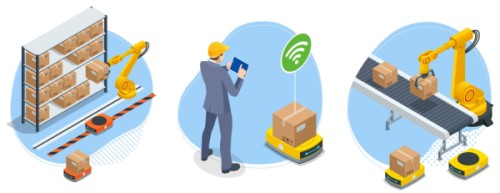Companys approach to Inventory Health
April 3, 2025
 Companys approach to Inventory Health
Companys approach to Inventory Health
Inventory means an item of value and asset in the books of the Company. This is the most important category of item that needs to be focused upon by the management for in its management lies the business efficiency as well as profits. Inventory holding is a must for any business organization that is into…
 Inventory Management Systems
Inventory Management Systems
Modern day inventory is managed by sophisticated system applications that are designed to manage complex inventory plans and to a large extent contain processes that initiate and streamline the operations and inventory management. In the wake of improvements in the communication technology, companies are deploying one single ERP system across all factories, offices, departments and…
 Why and When to avoid Holding Inventories
Why and When to avoid Holding Inventories
Every business organization that is engaged in manufacturing, trading or dealing with salable products holds inventories in one form another. Inventory is held in the form of raw materials or in the form of salable goods. Since every unit of inventoried item has an economic value and is itemized in the books of account of…
In any business or organization, all functions are interlinked and connected to each other and are often overlapping. Some key aspects like supply chain management, logistics and inventory form the backbone of the business delivery function. Therefore these functions are extremely important to marketing managers as well as finance controllers.
Inventory management is a very important function that determines the health of the supply chain as well as the impacts the financial health of the balance sheet. Every organization constantly strives to maintain optimum inventory to be able to meet its requirements and avoid over or under inventory that can impact the financial figures.
Inventory is always dynamic. Inventory management requires constant and careful evaluation of external and internal factors and control through planning and review. Most of the organizations have a separate department or job function called inventory planners who continuously monitor, control and review inventory and interface with production, procurement and finance departments.
Inventory is an idle stock of physical goods that contain economic value, and are held in various forms by an organization in its custody awaiting packing, processing, transformation, use or sale in a future point of time.
Any organization which is into production, trading, sale and service of a product will necessarily hold stock of various physical resources to aid in future consumption and sale.
While inventory is a necessary evil of any such business, it may be noted that the organizations hold inventories for various reasons, which include speculative purposes, functional purposes, physical necessities etc.
From the above definition the following points stand out with reference to inventory:

Inventory of materials occurs at various stages and departments of an organization. A manufacturing organization holds inventory of raw materials and consumables required for production. It also holds inventory of semi-finished goods at various stages in the plant with various departments.
Finished goods inventory is held at plant, FG Stores, distribution centers etc. Further both raw materials and finished goods those that are in transit at various locations also form a part of inventory depending upon who owns the inventory at the particular juncture.
Finished goods inventory is held by the organization at various stocking points or with dealers and stockiest until it reaches the market and end customers.
Besides Raw materials and finished goods, organizations also hold inventories of spare parts to service the products. Defective products, defective parts and scrap also forms a part of inventory as long as these items are inventoried in the books of the company and have economic value.
| INPUT | PROCESS | OUTPUT |
| Raw Materials | Work In Process | Finished Goods |
| Consumables required for processing. Eg : Fuel, Stationary, Bolts Nuts etc. required in manufacturing | Semi Finished Production in various stages, lying with various departments like Production, WIP Stores, QC, Final Assembly, Paint Shop, Packing, Outbound Store etc. | Finished Goods at Distribution Centers through out Supply Chain |
| Maintenance Items/Consumables | Production Waste and Scrap | Finished Goods in transit |
| Packing Materials | Rejections and Defectives | Finished Goods with Stockiest and Dealers |
| Local purchased Items required for production | Spare Parts Stocks Bought Out items | |
| Defectives, Rejects and Sales Returns | ||
| Repaired Stock and Parts | ||
| Sales Promotion Sample Stocks |
Your email address will not be published. Required fields are marked *